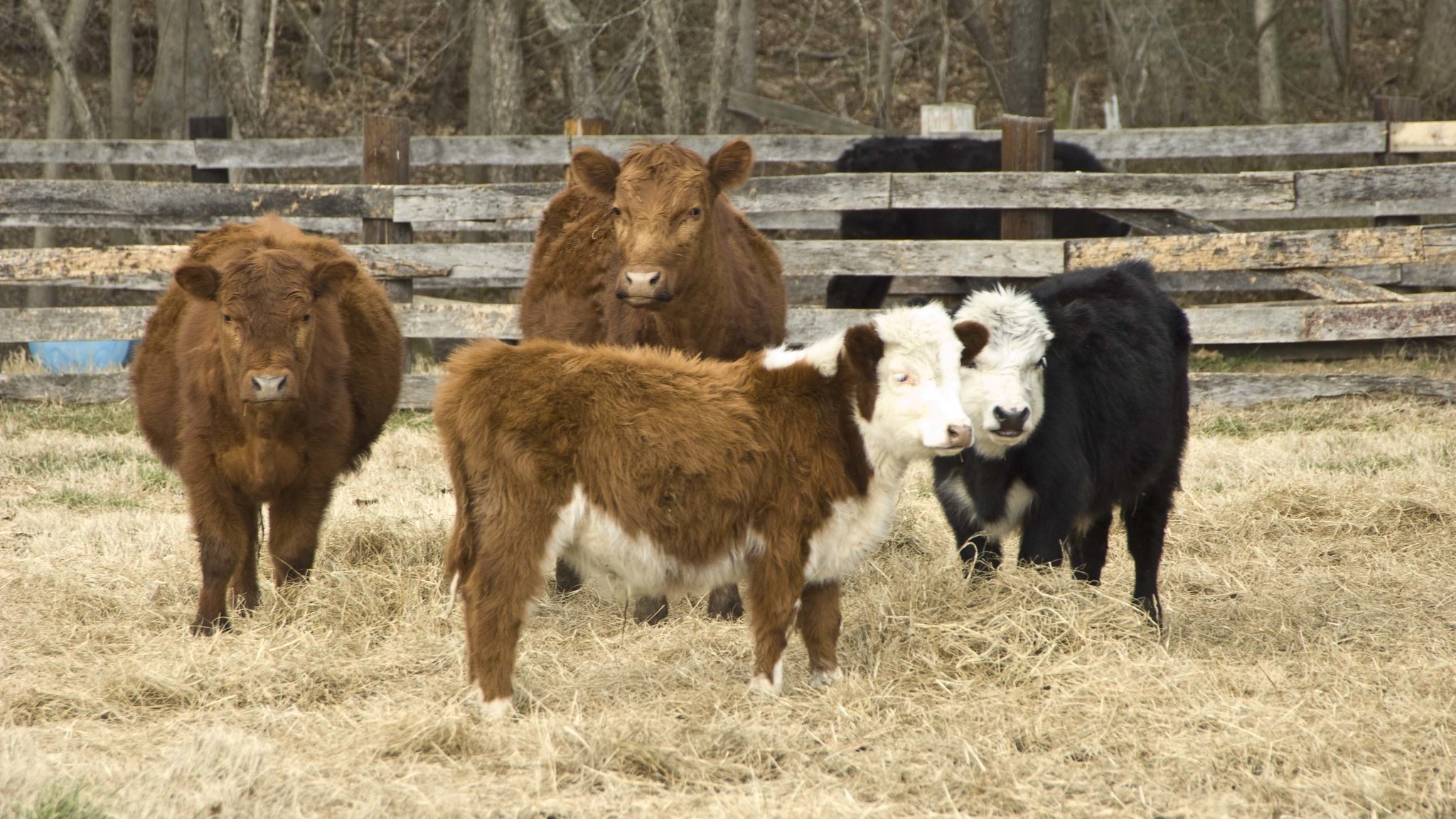Bovine Leukemia Virus

Bovine leukemia virus causes a blood-borne infection in cattle. The virus survives in the white blood cells (lymphocytes), resulting in chronic infection. Most cattle never show symptoms, but a small percentage develop malignant lymphoma and lymphosarcoma.
The virus is endemic in the United States and affects cattle in many other parts of the world as well.
While common and often benign, having this virus in a herd is costly. Economic losses include reduced milk production, premature culling, cattle deaths (from lymphosarcoma), increased replacement and veterinary costs, and trade restrictions on infected animals and germplasm.
Most infected animals (about two-thirds) show no outward signs of disease, especially younger animals (under 2 years). Less than 5 percent develop lymphosarcoma (most common in 4- to 8-year-old animals). The remainder develop persistent lymphocytosis.
When animals do show signs, they vary and may include:
- Swollen lymph nodes
- Labored breathing (dyspnea)
- Bloating
- Jugular vein distention
- Increased heart rate (tachycardia)
- Brisket edema
- Weight loss
- Decreased milk production
- Fever
- Loss of appetite
- Infertility
- Rear limb weakness or paralysis
- Protruding eyeball (exophthalmia)
- Gastrointestinal obstructions and/or ulcers with digested blood (melena)
- Increased blood lymphocyte counts
Bovine leukemia virus spreads when uninfected animals come into contact with blood, saliva, semen, or milk from infected animals. This usually happens during routine farm practices (for example, tattooing, dehorning, rectal palpation, injections, blood collection).
The virus can also spread from an infected female to her fetus or immediately after birth when the newborn calf ingests infected colostrum. Insect vectors such as Tabanid spp. and other large biting flies may also transmit the virus.
Here's what you can do:
- Use cautery or other bloodless methods of dehorning.
- Clean and disinfect all equipment between animals for procedures, such as castration, tattooing, and ear tagging.
- Never reuse needles between animals for blood collection or injections.
- Keep handling facilities clean.
- Control biting flies to lower your animals' risk of exposure.
- Test animals regularly for the virus to detect infections early and eliminate them from the herd.
There's no vaccine for bovine leukemia virus. Preventing its spread is the best way to protect your herd.
There's no treatment for bovine leukemia virus or for lymphosarcoma in cattle.
Only management practices can eliminate the virus from a herd. Options include:
- Identify infected cattle and slaughter positive reactors.
- Detect and isolate infected cattle, and then manage infected and non-infected cattle in separate herds.
- Test animals for the virus and take appropriate biosafety and management measures to minimize exposure for non-infected animals.
Report Signs of Animal Disease
Producers or owners who suspect an animal disease should contact their veterinarian to evaluate the animal or herd. Find an accredited veterinarian.
Animal health professionals (veterinarians; diagnostic laboratories; public health, zoo, or wildlife personnel; and others) report diagnosed or suspected cases of nationally listed reportable animal diseases to APHIS District Offices and to the State animal health official as applicable under State reporting regulations.
Controlling Bovine Leukemia Virus
Bovine leukemia virus is a common disease in U.S. dairies. Its prevalence in beef cattle is increasing. Previous national studies showed that 89 percent of U.S. dairy herds and 38 percent of U.S. beef herds had infected animals.
- Bovine Leukosis Virus on U.S. Dairy Operations, 2007 (36.76 KB) (APHIS Veterinary Services, National Animal Health Monitoring System)
- Bovine Leukosis Virus in U.S. Beef Cattle, 1999 (225.26 KB) (APHIS Veterinary Services, National Animal Health Monitoring System)
- Overview of Bovine Leukosis (Merck Manual)
- Preventive and Therapeutic Strategies for Bovine Leukemia Virus: Lessons for HTLV (Viruses, a journal of virology)
- Invited review: Bovine leukemia virus—Transmission, control, and eradication (ScienceDirect)
Testing
Virus-specific antibodies found in serum or milk are a good indicator of exposure and a practical method for disease screening. Agar gel immunodiffusion (AGID), enzyme-linked immunosorbent assay (ELISA), and polymerase chain reaction (PCR) tests are all used to identify bovine leukemia virus-positive animals.

